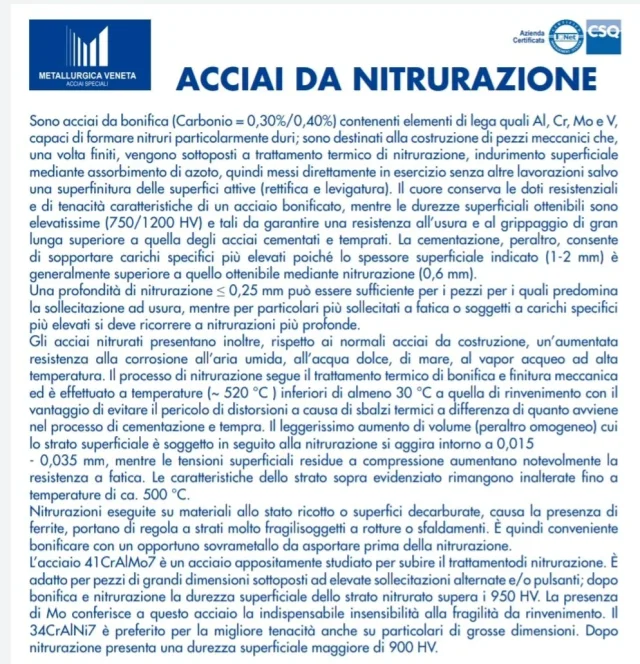Mattymecc
Guest
Good morning to all, I have a few questions to ask you about the thermal treatments of steels. in this period at school I am facing them, but compared to what I knew from before I noticed several discrepancies in the description of some treatments:
1) in nitriding we have been told that the pieces are reclaimed after the surface enrichment of nitrogen, I knew that it was the opposite because at 500°c there are no distortions of the piece and the microstructure does not undergo changes;
2) thermal treatments following cementation: I thought in a previous post of clarifying my ideas, but I was punctually denied. we have been told that after the surface enrichment of carbon, we perform a double tempering (an ac3 heart tempering + ac1 ac1 surface enriched layer) or a single tempering (at a halfway temperature between the two preceding ones), in order to have martensite throughout the piece. to these treatments follows a referral to 150-250°c.
Do you not have both the heart and the surface hard and fragile? the heart of the piece will be very tense or not?
how I was told in other discussions is no longer logical to do so? :
1) harden on all the piece at ac3 temperature of the heart;
2) referral to about 550-650°c to have the heart of the tenacious piece
3) surface tempering for induction or flame of the cemented layer;
4) 150-250°c extension to decrease internal tensions without affecting the hardness reached by the cemented layer after the tempering.
an example that seems quite appropriate to me is that of a cementing steel tree-pignon: If you followed the method that was explained to me at school you would have beyond that the surface of the teeth also the heart of the hard and little tense tree. with the other method would not be better the tenacity of the piece?
thank you in advance to those who will answer me.
1) in nitriding we have been told that the pieces are reclaimed after the surface enrichment of nitrogen, I knew that it was the opposite because at 500°c there are no distortions of the piece and the microstructure does not undergo changes;
2) thermal treatments following cementation: I thought in a previous post of clarifying my ideas, but I was punctually denied. we have been told that after the surface enrichment of carbon, we perform a double tempering (an ac3 heart tempering + ac1 ac1 surface enriched layer) or a single tempering (at a halfway temperature between the two preceding ones), in order to have martensite throughout the piece. to these treatments follows a referral to 150-250°c.
Do you not have both the heart and the surface hard and fragile? the heart of the piece will be very tense or not?
how I was told in other discussions is no longer logical to do so? :
1) harden on all the piece at ac3 temperature of the heart;
2) referral to about 550-650°c to have the heart of the tenacious piece
3) surface tempering for induction or flame of the cemented layer;
4) 150-250°c extension to decrease internal tensions without affecting the hardness reached by the cemented layer after the tempering.
an example that seems quite appropriate to me is that of a cementing steel tree-pignon: If you followed the method that was explained to me at school you would have beyond that the surface of the teeth also the heart of the hard and little tense tree. with the other method would not be better the tenacity of the piece?
thank you in advance to those who will answer me.



